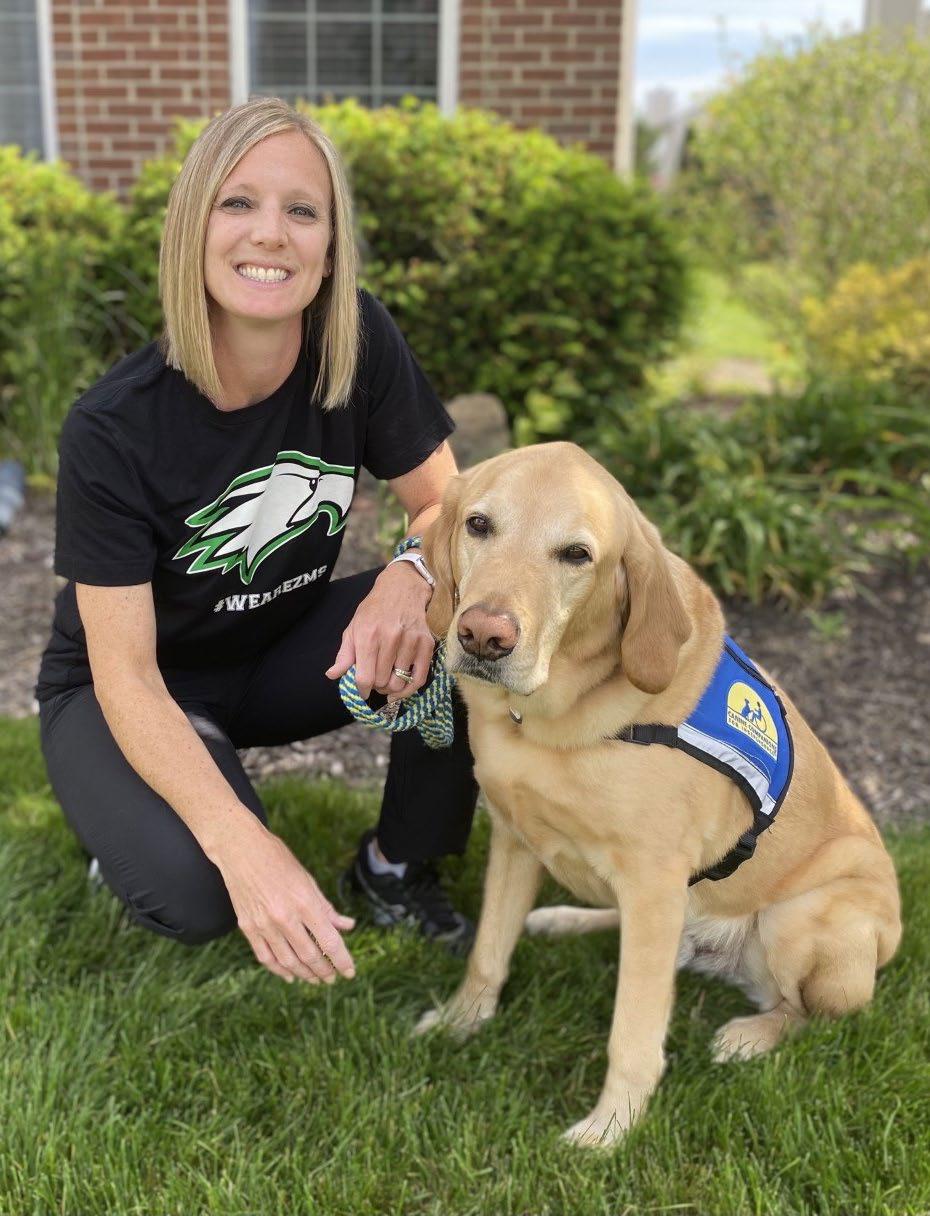
4 minute read
Pawsitive Pups
PupsPawsitive
An inside look at the role of service dogs and their handlers
Advertisement
By Claire Weesies, Guest Reporter
Adog that does laundry. A dog that goes through obstacle courses. A dog that can handle all the hugs from a third-grade class. Facility and service dogs are specially trained to help people in all kinds of ways. ZCS physical therapist Bree Pittman received her golden retriever, Franklin, from the Canine Companions non-profit. Franklin is specially trained as a facility dog to work with people with disabilities and came to Pittman fully trained. “My job was pretty much not to mess him up,” Pittman said. Facility dogs need to have a calm personality because they are around a lot of people. Franklin and Pittman go to four different school environments. They work with preschoolers through high schoolers, so Franklin always needs to be ready to adapt to different situations. “He has energy when I need him to,” Pittman said. “But he can be pretty cool and chill and relaxed.” Franklin is often used as a demonstrator or a motivator in school environments. Pittman uses him to demonstrate going over hurdles, around cones, and going through obstacle courses. Senior Carter Stepleton works with Franklin and for Halloween they did an obstacle course with spider webs. Franklin went through it holding a spider on a spoon in his mouth! “I’m thinking he’s really proud of himself,” Stepleton said. Franklin is also used as a motivator for students. Student can shake his paw, give him a hug, or play fetch with him if they complete their tasks. When Pittman asks her students to do things that are hard for them to do, Franklin can also be used as a distraction and a way to help students refocus. “He makes me feel happy,” Stepleton said. During the COVID-19 school year, Franklin was not being used the same as years prior. However, the teachers at the schools were able to love on him a lot more. Franklin was able to give the teachers comfort during a long, hard day. “I didn’t predict the effect that he would have on so many different people,” Pittman said. While facility dogs and service dogs are used in different ways, they both help people with disabilities. Service dogs are trained to do specific tasks for an individual. According to Jon Ellegood, a volunteer for Indiana Canine Assistance Network (ICAN), people ask a lot from service dogs, for example to not bark at people or squirrels. Asking them to ignore everything except the needs of their person is a lot for a dog to do and only a few dogs can figure it out. “To be a service dog, you have to always be ready to respond appropriately,” Ellegood said. Dogs begin training to be a service dog at only a few days old. At four months the ICAN dogs go to the men’s prison facilities in Pendleton and begin learning specific cues like sit, stay, and heel. After a year working at the men’s prison, the dogs go to the women’s prison on the west side of Indianapolis to finish their training. The service dogs at ICAN go through up to two and half years of intense training. “They’re very smart, lovable dogs who do incredible things.” Ellegood said. Service dogs help people with many different disabilities. A service dog can be a diabetic alert dog, they can help someone get around places, or they could help relieve anxiety in someone who has PTSD. Ellegood worked with a dog who was taught to open a refrigerator with a rope and grab a water bottle. This dog was also taught to drag a laundry basket by a rope to the washing machine and put the laundry in and take it out to better help her owner. Another dog named Charlie was paired with a man who used a motorized scooter. The man loved to work in his garage and get on the floor and work, but he had a hard time getting back up. Charlie was taught “brace” which means he stood rock solid to allow the man to use the dog to stand up. Ellegood said the best part of working with a service dog is “knowing that they’re going to change somebody’s life.” While facility and service dogs are highly trained dogs, they are also still man’s best friend. “If I sit on the couch, [Franklin] will come up and sit with me,” Stepleton said. Service and facility dogs do much more than helping people with disabilities. They open up new conversations and help people find their confidence again. They learn to love their owners and their job. “He’s loved unconditionally by the students, but he also loves them unconditionally,” Pittman said.
Bree Pittman poses with her service dog, Franklin. photo submitted by Pittman







